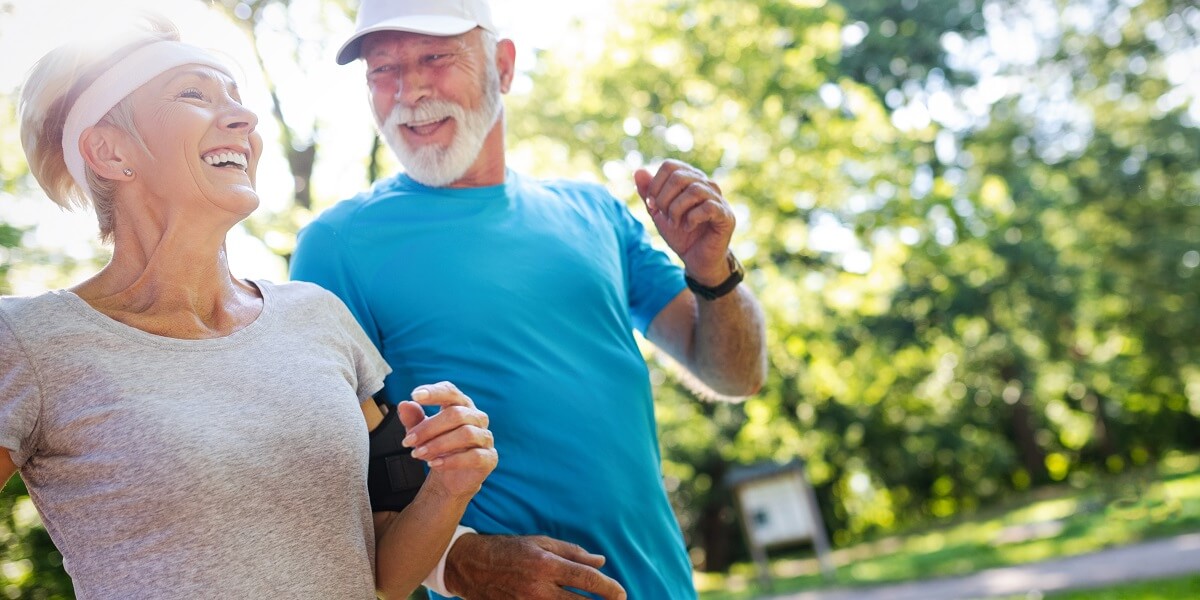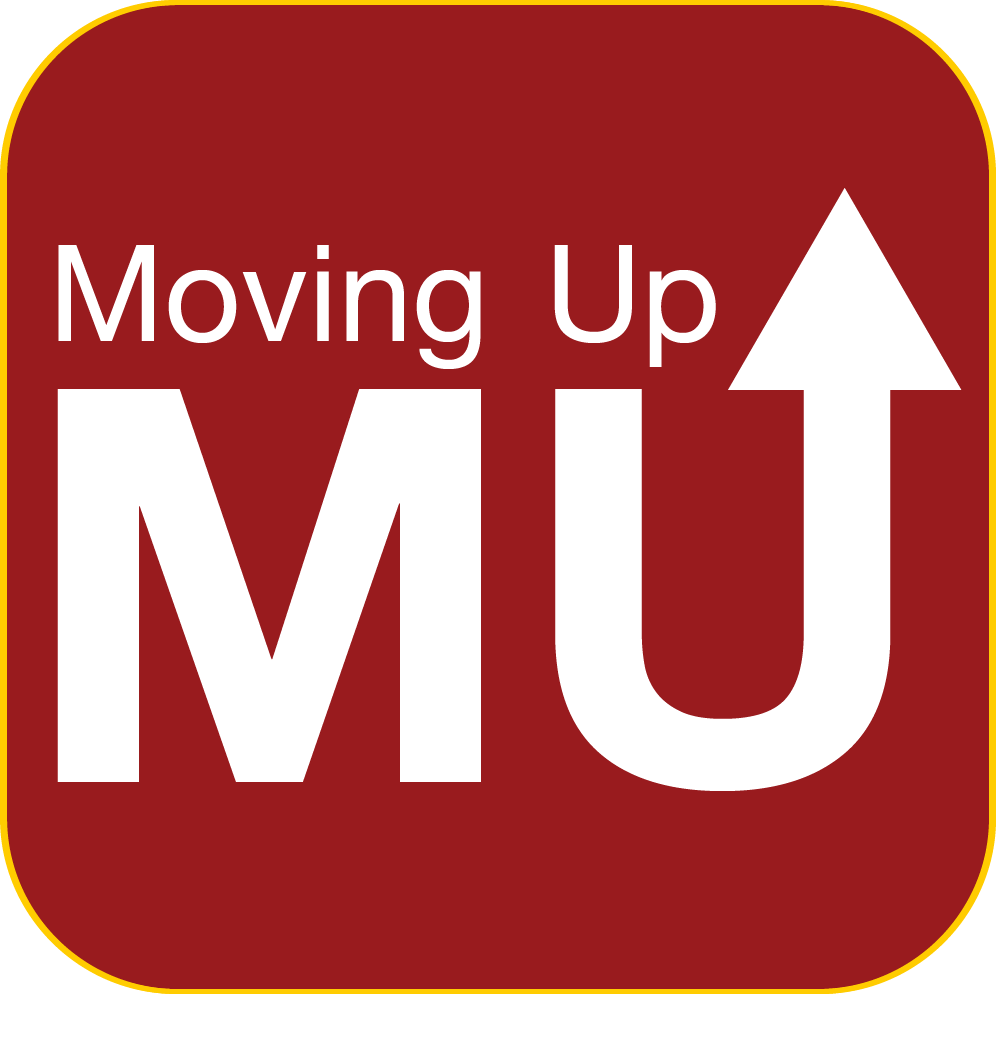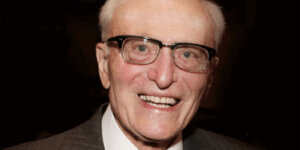
USC researchers are seeking to increase physical activity in older adults through Moving Up, a mobile phone app. Photo/iStock
Stacey Schepens Niemiec has long been passionate about using technology to improve the health and wellness of older adults. She became concerned with the widening of a “digital divide” among older adults that was limiting their access to technology-based health resources and services that are typically more widespread with younger populations.
Schepens Niemiec, an assistant professor of research at the Mrs. T.H. Chan Division of Occupational Science and Occupational Therapy at the USC Herman Ostrow School of Dentistry, has made it her mission to help close this digital divide however she can. One way is through Moving Up, a mobile phone app designed to help improve physical activity in older adults. The research project includes co-investigators from the USC Keck School of Medicine and Alzheimer’s Disease Research Center, and is built on the innovative DERIVA data management platform through a collaboration with researchers from the Informatics Systems Research Division (ISRD) at the Information Sciences Institute (ISI), part of the USC Viterbi School of Engineering. To date, Moving Up is the only smartphone app that offers a suite of features specifically optimized to address inactivity in older individuals.
As Schepens Niemiec, the PI on the project, pointed out, most ads for health and wellness apps and wearables target younger demographics, or late-midlife at most, and the specific issues older populations may have with physical activity end up getting ignored. “The issue isn’t just about to whom [health and wellness] products are marketed,” she continued. “These technologies rarely include consideration of the unique factors relevant to older adults that may facilitate or hinder utilization of these tools to assist them in living a healthy lifestyle.”
This is something Schepens Niemiec aims to change as part of her research. “I want health technology to be equally accessible to adults across the lifespan,” she said. “Moving Up is just one of those efforts to bring a healthy lifestyle app directly to older adults.”
A Holistic Approach
Physical activity is important for everyone of all ages to keep our bodies and minds healthy. For older populations, physical activity is necessary to maintain their lifestyles, yet less than 10% of older adults meet national physical activity guidelines. “From an occupational therapist’s perspective, remaining physically active in later life can not only improve an older person’s healthspan, but also provides an avenue to ensure one can participate in meaningful activities and desired occupations for as long as possible,” Schepens Niemiec noted.
There are many reasons for the lack of physical activity in older adults, including social stereotypes, feeling as if they’re just “too old” to be active, and a lack of social support. But Moving Up aims to address these psychosocial limitations as well.

More than simply an app to track activity progress, Moving Up targets both the mind and the body, while also considering the context in which a person carries out daily activities. The app is unique in the realm of health and fitness apps not only because it’s geared towards older people, but also because it utilizes psychosocial elements in its features, like social cognitive theory. This theory suggests that people engage in healthy behaviors, including physical activity, if they have the confidence to do so. The app also incorporates concepts from stereotype embodiment theory, which examines how social stereotypes on aging influence the health behaviors of older adults.
Because of this, Moving Up’s suite of features is useful in tracking physical activity, but also in helping change users’ perspectives on health and aging. One such specialized feature connected to the activity tracker includes individualized education and motivational prompts to support users on their physical activity journey.
“It not only capitalizes on the evidence that supports activity tracking as an effective way to improve activity level, but it’s also designed in a way to help older adults overcome some of the more nuanced barriers they may face to living an active lifestyle,” explained Schepens Niemiec. “Obstacles addressed range from limited knowledge of what activity is healthy and safe to do in older adulthood, to misconceptions about aging that lead people to believe they are simply too old to be active.”
The app is currently in research stages and is funded by the National Institute on Aging at NIH. Taking part in the research experiment are 100 underactive older adults, defined by the project as individuals between the ages of 65–84 who accumulate less than 150 minutes of moderate-to-vigorous intensity activity per week. After each phase of the research project, the team will examine the collected data so they can continually upgrade and optimize the app, ultimately creating a template that can be used to help enhance future physical activity apps as well.
An Innovative Data Management Platform
Moving Up nearly didn’t get off the ground until a chance encounter with researchers from ISI. During the initial product development stages of the project, Schepens Niemiec’s team struggled to find the just-right collaborators capable of developing the intricate technological functionality of Moving Up. With deadlines closing in, Schepens Niemiec began reaching out to her contacts to explore alternatives to her original technology partners.
“I want health technology to be equally accessible to adults across the lifespan–Moving Up is just one of those efforts to bring a healthy lifestyle app directly to older adults.”
–Stacey Schepens Niemiec
It was during this time that she was introduced to Robert Schuler, a computer scientist at ISI with expertise in scientific data management, including NIH-sponsored data coordinating centers. A member of ISRD, led by grid computing pioneer Carl Kesselman, Schuler researches and develops innovative data management technology as part of the DERIVA platform, which is used as the underlying data management system for projects ranging from small labs, core facilities, multi-site collaborations, and data coordinating centers. The platform supports researchers with the design, acquisition, analysis, sharing, and publication of data throughout the research lifecycle, and is flexible enough to be tailored to virtually any research problem very quickly.
The lightweight and user-friendly DERIVA is like a content management system but specialized to help scientists work with data in a streamlined and efficient way. “DERIVA helps researchers face the many unique challenges related to handling the unprecedented volume and diversity of data we are now able to consume with current tools and instruments,” said Schuler.
Moving Up utilizes the DERIVA platform for managing all of its research data, including real-time events obtained by the mobile app from the activities of study participants (i.e., the anonymous users of the app). As Schuler explained, this includes details of the research protocol, as well as motivational messages and images meant to engage the participants, the event stream generated by the mobile app, and user activity reports generated nightly by the system. Customized processes that run on the DERIVA server are responsible for fetching tasks for the study participants and recording user activity, like daily steps from the app’s activity tracker. DERIVA integrates with Cloud messaging services to send real-time notifications to study participants’ mobile phones, like motivational messages, reminders, task instructions, and other activity assignments.
DERIVA is available as open source software and is under active development. “We’re expanding its capabilities with new computational pipelines and more data visualization features,” Schuler said, adding that the team is enhancing the platform through automating key tasks to further streamline the data management process. “[We also] plan to provide containerized, cloud-ready deployment configurations of DERIVA, for users who wish to take advantage of scalable resources on the cloud for hosting the DERIVA platform.”
Once the data collection phases of Schepens Niemiec’s study are completed, her investigative teams will have a treasure trove of information on the app. This will provide them with the material they need to optimize its usability, likeability, and efficacy in helping encourage older adults to begin and maintain their physical activity.
“We have plans to continue this iterative development process and conduct larger-scale trials that will test newer versions of Moving Up,” said Schepens Niemiec. “Should it turn out that Moving Up is effective and desirable to older adults, my team will work to make the app widely available to the community.”
Published on June 3rd, 2020
Last updated on May 16th, 2024









